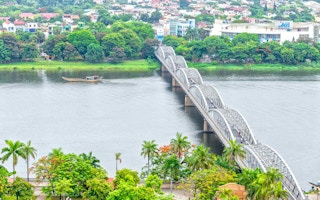Prime Minister Nguyễn Tấn Dũng has approved the funding of nearly US$224 million for Secondary Cities Development Project (Green Cities).
The money will be borrowed from the Asian Development Bank (ADB).
The project will be carried out over five years in the three secondary cities, including Hà Giang in the northern province of Hà Giang, Vĩnh Yên in the northern province of Vĩnh Phúc and Huế in the central province of Thừa Thiên - Huế.
Focusing on urban services, flood protection, urban sewerage, and urban solid waste management, the project aims to improve and expand traffic systems and infrastructure, promote socio-economic development and tourism and increase people’s incomes.
It will also help cut pollution by improving drainage systems, waste treatment and environment sanitation.
The project is part of effort of cities around Asia and the Pacific which are identifying ways of making their environment healthier and more livable through the improvement of air, water and land.
Việt Nam is rapidly urbanizing with a structural shift from agriculture to industry and services. Its challenge is to maintain its development prospects by minimising risks associated with urbanisation, according to Việt Nam Economic Times.
The Korea International Co-operation Agency (KOICA) and the construction ministry last year signed an agreement on a technical assistance project for establishing Việt Nam’s Green City Master Plan.
Accordingly, it helps Việt Nam to develop a set of green city indexes and a Green City Planning Decision Support System and recommends a legal framework for green city planning to the construction ministry.
To become a green city, some standards need to be met, such as the presence of green space, green constructions, green transport and green industry, besides some other criteria, architect Lê Thị Bích Thuận said on baoxaydung.com.vn.
Some global cities have become green cities, such as Curitiba in Brazil, Sweden’s Stockholm, Freiburg in Germany and Singapore.










